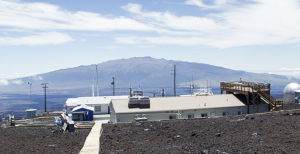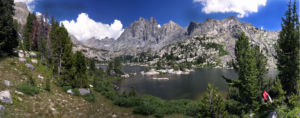Surveys continually show that the American population is becoming increasingly convinced of and concerned about the changing climate and global warming. The principal cause being the increase of CO2 in the atmosphere along with methane. The two primary sources comprising about 80% of these emissions are from the production of electricity from coal and natural gas and burning oil in the transportation sector.
My blogs, and much of what else that is written and published about this topic, focuses on the causes, solutions and impact on society. The Pentagon has issued warnings for decades indicating that climate change is the biggest threat to world peace. Yea, that’s right. That’s because of the turmoil and mass migrations it will cause when countries run out of water and can’t feed their own population; read Syria.
There are so many catastrophic consequences that are already occurring and will continue to get worse that I am not going to consider listing them here. But I have, and will continue to write about them over time.
What I do want to highlight today is fundementally why I, and the Sierra Club, have made the Climate our highest priority. Simply put, protecting Our Wild America, and wildlands worldwide.
Next month, May 28, will mark the Sierra Club’s 125th Anniversary. It was founded by John Muir to save and protect his beloved Sierra Nevada mountains.
You may know that I am about to begin my 5th year on the Sierra Club’s National Board of Directors. And I attended the 2005 Sierra Club Convention when the Club leaders, both Staff and Volunteers, overwhelmingly agreed that fighting Climate Change needed to be our highest priority going forward. The reason was clear. We could not protect our wilderness areas or any natural and wild area, whether it was Nearby Nature or remote, if we allow a changing, warming climate to devastate these precious lands.
I joined the Sierra Club in 1975 to protect the spectacular places where I loved to backpack and paddle. Places like the Sawtooth Mountains in Idaho.
The wind river mountains in Wyoming.
Glacier Peak Wilderness in northern Washington State.
And the Boundary Waters in Northern Minnesota.
So the message I want to send today is that we never forget what is the heart and soul of what we do…PROTECT OUR BEAUTIFUL WILD PLACES IN THE USA AND AROUND THE PLANET.
In that regard, there has been a lot of talk in the media recently about RED LINES. Lest we forget, there is a red line for the planet as well and we are approaching it very quickly. Once it is crossed there may be no way to come back to anything approaching what we now consider “normal” or stable and predictable.
The following article describes how close we are coming to crossing this barrier and how quickly it is happening. And it is our behavior as a society that is causing this crisis. How we react and how quickly will determine the future we bequeath to our decendents.
Atmospheric carbon dioxide hits record levels
Scott Waldman, E&E News reporte
Published: Tuesday, March 14, 2017

Mauna Loa Observatory
Mauna Loa Observatory, an atmospheric baseline station in Hawaii. Photo courtesy of the National Oceanic and Atmospheric Administration.
The amount of carbon dioxide in the atmosphere has increased at an unprecedented pace in the last two years, even as Trump administration officials discount the relevance of a number that many climate scientists find deeply disturbing.
The CO2 measured at the Mauna Loa Baseline Atmospheric Observatory in Hawaii hit 405.1 parts per million last year, the National Oceanic and Atmospheric Administration announced. That’s an increase of 3 parts per million, which matched the record of 3 parts per million in 2015. It marks five consecutive years of CO2 increases of at least 2 parts per million, an unprecedented rate of growth, said Pieter Tans, lead scientist at NOAA’s Global Greenhouse Gas Reference Network.
“The rate of CO2 growth over the last decade is 100 to 200 times faster than what the Earth experienced during the transition from the last ice age,” Tans said. “This is a real shock to the atmosphere.”
The number is significant because the amount of carbon dioxide in the atmosphere was 280 parts per million from about 10,000 years ago until the start of the Industrial Revolution. The monthly global average nosed above 400 parts per million for the first time in March 2015 and is now increasing at a faster pace, according to NOAA researchers. What’s more, carbon emissions stay in the atmosphere for years, so even as some emissions have been reduced in recent years, the global average level continues to climb. In 1960, they were about 300 parts per million, suggesting a precipitous climb in a relatively short period of time since then.
That means carbon dioxide levels have dramatically increased by more than 40 percent in the lifetime of many people on Earth, said Ralph Keeling, director of the Scripps CO2 Program and a greenhouse gas expert. Keeling, whose father, Charles David Keeling, pioneered modern carbon measurement systems, said the carbon dioxide levels will continue to stay high as fossil fuel burning increases, and that they could hit 410 parts per million this year or next.
“As we twiddle our thumbs, CO2 just keeps going up and up; it’s a lot of carbon dioxide compared to what the atmosphere has had in it over many, many thousands of years or even hundreds of thousands of years,” he said.
The high rate of increase in CO2 levels was also observed at 40 other facilities in NOAA’s Global Greenhouse Gas Reference Network. The CO2 levels trap heat in the atmosphere and in the oceans, causing sea levels to rise, spurring drought in spots across the globe and increasing extreme weather, among many other effects observed by scientists.
Scientists: Yes, Mr. Pruitt, CO2 is the primary contributor to warming
For about two decades, climate scientists have agreed that the amount of carbon dioxide being pumped into the atmosphere by humanity, chiefly from the burning of fossil fuels, is causing the planet to warm at a rapid pace, Keeling said. The Mauna Loa results mark a troubling trend, as CO2 emissions continue at a record pace even as coal emissions in China decline and renewable energy use is increasing around the globe.
Atmospheric CO2 at Mauna Loa Observatory
CO2 graph
The carbon dioxide data (red curve), measured as the mole fraction in dry air, gathered on Mauna Loa constitute the longest record of direct measurements of CO2 in the atmosphere. The black curve represents the seasonally corrected data. Graph courtesy of the National Oceanic and Atmospheric Administration.
U.S. EPA Administrator Scott Pruitt angered many researchers and environmental groups last week when he falsely claimed that humans are not the primary contributor to climate change.
Pruitt’s comments also included his assertion that Congress should decide whether EPA should even regulate carbon dioxide.
“I think that measuring with precision human activity on the climate is something very challenging to do, and there’s tremendous disagreement about the degree of impact, so no, I would not agree that it’s a primary contributor to the global warming that we see,” he said on CNBC’s “Squawk Box.”
Pruitt’s comments were one of the most direct indications yet that the Trump administration will ignore the federal climate scientists warning it about data points such as the rate of CO2 growth observed on Hawaii.
Yesterday, a group of more than two dozen climate scientists sent Pruitt a letter criticizing his comments and pointing out that most climate warming over the last few years is due to increasing carbon dioxide levels as well as other greenhouse gases. The scientists, who included researchers from Harvard University, Stanford University and the Massachusetts Institute of Technology, among others, pointed out that humans have increased carbon dioxide levels by 40 percent and that CO2 is continuing to drive warming.
“We know that if we continue to increase the atmospheric levels of greenhouse gases, the Earth will continue to heat up, with serious consequences for economies and ecosystems across the globe,” they wrote.
Pruitt’s comments also alarmed American Meteorological Society Executive Director Keith Seitter, who also sent Pruitt a letter yesterday noting that thousands of independent scientists and numerous scientific institutions around the world have concluded that humans are driving the carbon dioxide levels now warming the world. Seitter said he does not know of any scientific institution that has reached a different conclusion.
“We understand and accept that individuals and institutions both public and private can reach differing conclusions on the decisions and actions to be taken in the face of this reality,” he wrote. “That’s the nature of the political process in a democratic society. But mischaracterizing the science is not the best starting point for a constructive dialogue.”
Twitter: @scottpwaldman Email: swaldman@eenews.net









